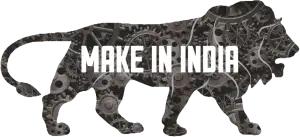The Science of Dielectric Beamsplitters in Laser Systems
The mesmerizing world of lasers, with its precision and power, has revolutionized numerous industries, from manufacturing to medicine. Behind the awe-inspiring capabilities of lasers lies a complex web of optical components, each playing a crucial role in shaping and directing light. One such essential component is the dielectric beamsplitter – a device that holds the key to splitting light’s secrets in laser systems. In this blog post, we’ll delve into the science of dielectric beamsplitters and uncover their vital role in the realm of lasers.
The Essence of Dielectric Beamsplitters
Dielectric beamsplitters are thin-film optical coatings that exhibit the extraordinary ability to split a beam of light into two or more separate beams. Unlike traditional beamsplitters, which often use metallic coatings with limited control over the split ratio, dielectric coatings offer unparalleled precision and versatility.
At the heart of dielectric beamsplitters is the principle of interference. The coating consists of multiple layers of dielectric materials, carefully deposited on a substrate using advanced techniques such as physical vapor deposition (PVD) or chemical vapor deposition (CVD). When light encounters these layers, it interacts with each one, leading to a phenomenon known as constructive and destructive interference.
Diving into the Science: Constructive and Destructive Interference
Constructive interference occurs when the peaks and troughs of individual light waves align, resulting in reinforcement and amplification of the reflected and transmitted light. Conversely, destructive interference takes place when the peaks and troughs counteract each other, leading to the suppression of certain wavelengths or directions of light.
Through precise engineering of the thickness and refractive indices of each dielectric layer, scientists can control the extent of constructive and destructive interference, determining the splitting ratio and polarization properties of the beamsplitter. This level of control empowers laser systems with unmatched accuracy and efficiency.
Types of Dielectric Beamsplitters for Lasers
Dielectric beamsplitters come in various types, each tailored to specific laser applications:
- Non-Polarizing Beamsplitters: These beamsplitters maintain an equal split ratio for both s-polarized and p-polarized light. They are commonly used in applications where preserving the polarization state of light is crucial.
- Polarizing Beamsplitters: Polarizing beamsplitters are designed to split light based on its polarization state. They reflect one polarization (usually s-polarization) while transmitting the other (p-polarization), making them invaluable in laser systems where precise polarization control is required.
- Broadband Beamsplitters: These beamsplitters are optimized to work across a wide range of wavelengths. They ensure a consistent splitting ratio over the entire specified wavelength range, making them ideal for multi-color or white light illumination.
- Narrowband Beamsplitters: Narrowband beamsplitters, on the other hand, are engineered to work best at a specific wavelength. They are particularly useful in laser systems where a precise wavelength needs to be split.
Applications in Laser Systems
Dielectric beamsplitters play a pivotal role in various laser systems, enhancing their functionality and performance:
- Laser Beam Steering: Beamsplitters are essential in redirecting laser beams, allowing for precise control of the laser’s path and angle of propagation.
- Laser Interferometry: In interferometry, beamsplitters are used to divide the incident light into multiple beams, enabling the measurement of minuscule changes in length or phase.
- Laser Diode Arrays: Dielectric beamsplitters are employed in laser diode arrays to combine individual laser beams into a single, more powerful beam.
- Biomedical Imaging: In biomedical imaging applications, beamsplitters enable the illumination and detection of different wavelengths, facilitating various imaging techniques.
Final Thoughts
The science of dielectric beamsplitters is a testament to the precision and innovation achieved in the field of optics. Their ability to split light into various paths with unparalleled accuracy has unlocked the full potential of lasers in diverse applications. As technology continues to advance, we can expect dielectric beamsplitters to play an increasingly vital role in shaping the future of laser systems, empowering new discoveries and breakthroughs across industries. The quest to split light’s secrets has only just begun, and dielectric beamsplitters stand as a cornerstone of this fascinating journey.
FAQs on The Science of Dielectric Beamsplitters in Laser Systems
1. What are dielectric beamsplitters and their role in laser systems?
Dielectric beamsplitters are optical components that divide and transmit light of specific wavelengths. They’re vital for manipulating laser beams in various applications.
2. How do dielectric beamsplitters work?
They exploit interference effects within multiple layers of dielectric materials to reflect a portion of incident light and transmit the rest, based on wavelength and angle of incidence.
3. Why use dielectric beamsplitters instead of other types?
Dielectric beamsplitters offer high reflectivity, minimal absorption, and precise control over wavelengths, making them ideal for laser systems with specific requirements.
4. What’s the principle behind their selective reflection?
Constructive interference between light waves reflected at different interfaces within the dielectric layers results in the desired wavelength-dependent reflection.
5. Can dielectric beamsplitters be customized for different laser wavelengths?
Absolutely, their design can be tailored for specific laser wavelengths, enabling optimal performance and efficient light manipulation.
6. Are there limitations to dielectric beamsplitters?
They may exhibit angle-dependent performance, and high-power laser applications require careful consideration to avoid damage due to absorption or thermal effects.
7. How do they contribute to beam shaping and combining?
Dielectric beamsplitters facilitate precise splitting and combining of laser beams, crucial for applications like interferometry, lithography, and laser systems integration.
8. What role do they play in multi-wavelength lasers?
Dielectric beamsplitters enable selective separation of different wavelengths, enhancing versatility in lasers used for medical, research, and industrial purposes.
9. Can they withstand high laser power levels?
Dielectric coatings are designed to handle specific power levels, but it’s essential to choose coatings that match the laser’s characteristics to prevent damage.
10. How do dielectric beamsplitters affect polarization?
The design can be optimized to minimize or control polarization effects, making them suitable for applications where polarization is crucial, such as optical communication.








